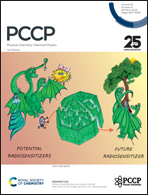Enhancing saturable absorption in a Au-decorated MoS2/PEDOT:PSS nanocomposite through plasmon resonance and Pauli blocking†
Abstract
We have effectively demonstrated a technique for substantial alteration of the nonlinear saturable absorption (SA) properties in nanocomposite films (NCF) composed of poly(3,4-ethylenedioxythiophene) doped with poly(4-styrenesulfonate) (PEDOT:PSS) and molybdenum disulfide (MoS2) decorated with gold nanoparticles (AuNPs). This control is achieved by adjusting the AuNP concentration on the MoS2 surface and varying the input pulse energy of the laser. The simple drop-casting method is used to create the nanocomposite films (NCFs) on a glass substrate with different amounts of Au-decorated MoS2. The Kramers–Kronig equations are employed for determining the refractive index and extinction coefficient values of the resulting NCFs. Nonlinear investigations reveal that adding Au-decorated MoS2 to pure PEDOT:PSS alters its optical nonlinearity. Surface plasmon resonance and Pauli blocking have been observed in Au-decorated MoS2/PEDOT:PSS NCFs. This increases NCF's saturable absorption. An open aperture Z-scan method is utilized to study nonlinear optics, with excitation achieved using a nanosecond (ns) pulsed laser operating at a 532 nm wavelength. The findings reveal the noteworthy saturable absorption characteristics of the NCFs.



 Please wait while we load your content...
Please wait while we load your content...